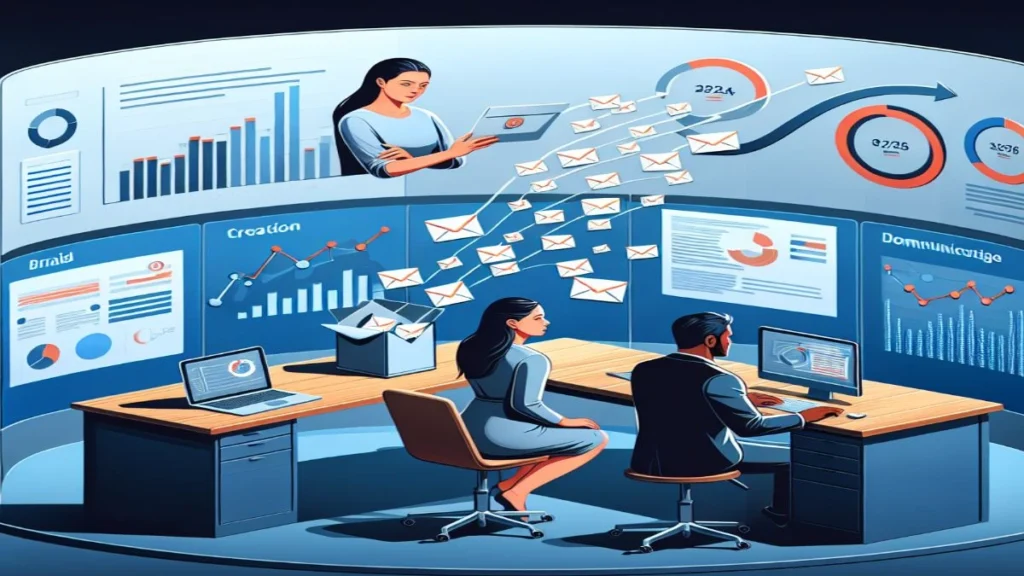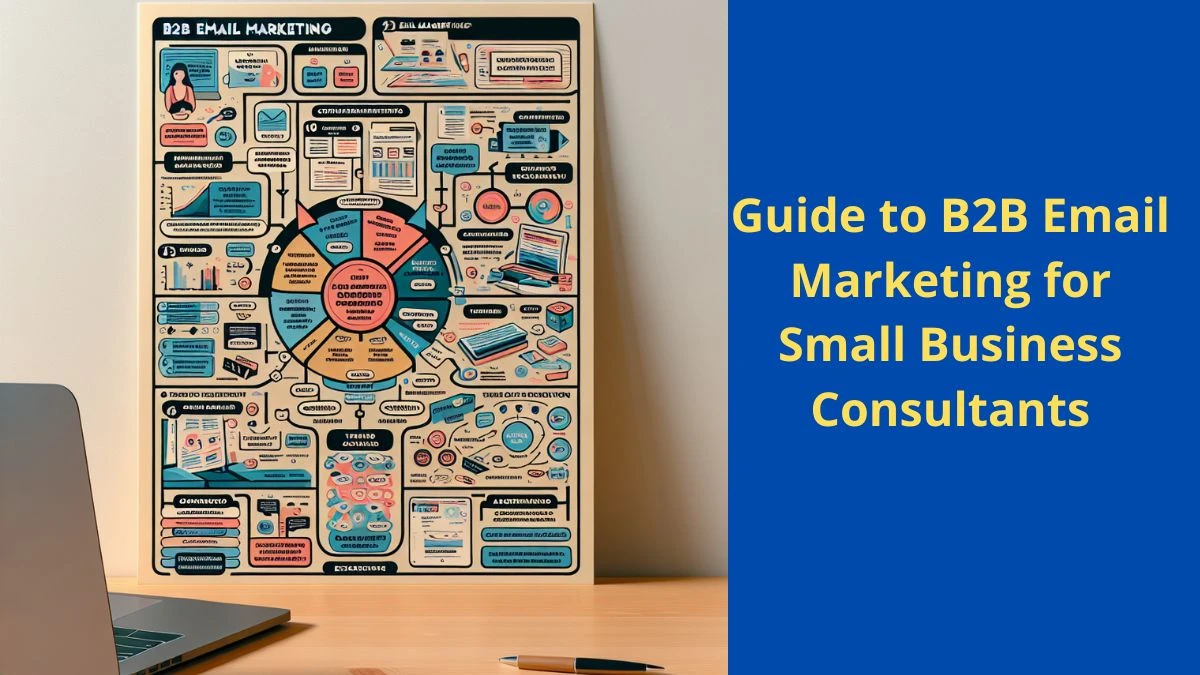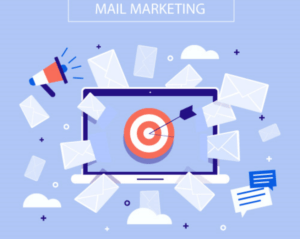In today’s digital age, email marketing remains a powerful tool for B2B small business consultants to connect with potential clients and secure new partnerships. With the right strategies and approach, B2B email marketing can be a game-changer for consultants looking to expand their client base and establish their expertise in the industry. This comprehensive guide explores the best practices and successful tactics for leveraging B2B email marketing to drive growth, build relationships, and achieve long-term success in the consultancy business.
Understanding B2B Email Marketing

Have you ever wondered how email could be a powerhouse in the world of business-to-business consulting? It’s like a digital key that opens doors to countless networking halls, where opportunities and potential collaborations are waiting at every table. For those offering consultancy services to small businesses, getting to grips with email as a communication and marketing tool is essential. It’s not just about blasting out messages; it’s about cultivating a professional relationship. Let’s unpack how email fits into this consulting puzzle and why it should be the cornerstone of your strategy to engage and win over clients.
The Role of Email Marketing in B2B Consulting
In the realm of B2B consulting, email marketing acts like a bridge that connects experts with companies craving their know-how. It’s more than just shooting messages into the void; it’s about engaging in conversations that matter. Picture it as your digital handshake – a personal, yet scalable way to introduce yourself, showcase your skills, and deliver value-packed insights right to your prospect’s inbox.
This method is especially pivotal for consultants because it builds trust. Instead of cold calling or faceless ads, you’re offering tailored content that speaks directly to your potential client’s needs. Through email, you’re not just reaching out; you’re offering solutions and fostering a rapport that can blossom into profitable partnerships. Email is the tool that helps turn your expertise into client connections.
Benefits of B2B Email Marketing for Small Business Consultants
Email marketing isn’t just a way to blast out promotions; it’s a vital platform that brings numerous advantages for small business advisors. One of the biggest perks is its cost-effectiveness. Compared to other marketing channels, sending emails is incredibly affordable, giving you a bigger bang for your buck. And the best part? It’s scalable. Whether you’re reaching out to ten potential clients or ten thousand, email allows you to touch base without breaking the bank.
The personal touch that comes with a well-crafted email can work wonders. It makes prospective clients feel valued and more open to engage with you. And let’s not forget the analytics! Email marketing platforms provide crucial data that let you peek into your campaigns’ performance, helping you tweak and perfect your strategies over time. This means that your messages get smarter, more personal, and more effective with each send. With these powerful benefits, email marketing stands as a cornerstone for any consultant’s outreach efforts.
Crafting Compelling Email Content
Creating the kind of email content that grabs the attention of your business clients is like crafting a key that unlocks their interest. It’s not just about informing them; it’s about connecting with them on a level that speaks directly to their needs and motivations. As a small business consultant, mastering the art of personalization and developing strong calls-to-action are your secret weapons. These two aspects can make the difference between an email that gets opened and one that goes straight to the trash folder. Let’s dive in to uncover how to make your emails impossible to ignore.
Personalization and Segmentation Strategies
When it comes to reaching out to potential clients, personalization is key. It shows you know who you’re talking to and that you understand their needs. Start by calling them by their name, and mention specific challenges they face in their industry. This isn’t just about being friendly; it’s about being relevant.
Next up is segmentation. This is where you group your contacts by similar traits, like their job position, company size, or where they are in the buying process. Why does this matter? Because a message that hits home with a CEO might not resonate with a marketing coordinator. Tailoring your emails to each segment ensures your message is always on point.
Call-to-Action Techniques for Consultant Engagement
A call-to-action (CTA) is like a signpost on the path to your business goals; it guides prospective clients towards making a move. For consultants, it’s the moment you ask for a handshake, whether virtual or in real life. The secret sauce is ensuring your CTAs are clear, compelling, and incredibly clickable.
To craft an irresistible CTA, start by sparking curiosity or creating a sense of urgency. Phrases like “Schedule your free consultation now!” or “Get your customized business growth plan today!” work wonders. They tell clients exactly what to do next and why they shouldn’t wait. Remember, a dash of exclusivity can make your offer too tempting to pass up.
Building a Quality Email List
Building a rock-solid email list is like laying the foundation for a skyscraper—it’s crucial if you want to reach towering heights of success. As a consultant, the stronger your list, the greater your chances of connecting with the right people and companies. That’s why we’re going to dive deep into strategies for not just adding names to your list, but making sure each one counts. Plus, we’ll explore how to keep that list as healthy and active as a well-kept garden, ready to bloom with new business opportunities.
Strategies for Obtaining High-Quality Contacts
Obtaining top-notch contacts is crucial for the success of your outreach efforts. It’s not just about collecting any email you can get your hands on; it’s about finding the right people who will be genuinely interested in your consultancy services. A valuable contact list is like a goldmine for generating leads, nurturing relationships, and ultimately watching your business thrive.
Start by thinking of where these potential clients might gather. LinkedIn is a gold mine for professional connections—join groups relevant to your industry and participate in discussions to get noticed. Attending networking events can also put you in the same room with industry leaders and potential clients. If you are generating leads online, consider offering a valuable resource like an eBook or webinar in exchange for contact information, which not only gives you a way to reach out but also establishes your credibility and value from the get-go. Remember, it’s about quality, not just quantity.
Maintaining and Nurturing an Email List
Keeping an email list fresh and engaged is crucial for the success of your outreach efforts. First and foremost, it’s about respecting your contacts and providing them with value. This isn’t just a one-time deal; think of it like tending a garden. You’ll need to regularly check in, offer relevant information, and remind your audience why they signed up in the first place.
Regular communication is key, but so is the quality of your content. Send emails with purpose, whether it’s industry insights, company updates, or personal stories that connect with your readers on a human level. Remember, a well-cared-for list is a responsive and profitable one, so invest the time to nurture these relationships. After all, these aren’t just contacts, they’re potential partners, and every email is a step towards a stronger connection.
Optimizing Email Campaign Performance
Getting your emails opened, read, and acted upon is like hitting a moving target. For those who navigate the consultancy landscape, it’s crucial to constantly fine-tune your email strategy to reach the mark. Often, this means experimenting with different elements of your campaigns to see what resonates best with your audience. It’s all about A/B testing, tracking performance metrics, and adapting to the insights you gain. By mastering these skills, you’ll not only get a better return on your email efforts but forge stronger connections with the businesses that need your sage advice.
A/B Testing for Email Optimization
If you want to make sure your emails hit the mark, think about A/B testing as your secret weapon. It’s like conducting a science experiment, but instead of mixing chemicals, you’re mixing up words, designs, and calls to action to see which combination sparks the biggest reaction.
Start small by changing one thing at a time, such as the subject line or the button color, and send the different versions to segments of your audience. By carefully watching how each group responds, you’ll learn valuable lessons about what works and what doesn’t. Over time, this kind of testing can lead to emails that are fine-tuned for success, making each message more likely to strike gold with your audience.
Measuring and Interpreting Key Performance Metrics
Knowing if your emails hit the mark comes down to analyzing key performance metrics. It’s like keeping score in a game; these metrics show you how well you’re playing. First off, you’ve got your open rates, which tell you how many people are actually interested enough to open your emails. This number can clue you in on how catchy your subjects lines really are.
Then, track those click-through rates (CTR) to see if your content is compelling enough to get readers to take action. It’s the digital version of seeing who walks into your store after seeing an ad. Conversion rates are also crucial; they show you how many of those clicks turned into real deals or desired actions, like signing up for a webinar or downloading your ebook.
Bounce rates are less fun – they’re the emails that never made it because of issues like invalid addresses. Stay eagle-eyed on this one; high bounce rates can hurt your sender reputation. Lastly, keep an eye out for the unsubscribe rate. It’s a reality check on how relevant and valuable your audience finds your content. If this number’s high, it’s time to rethink your approach. Use these stats to steer your email strategy towards success and make sure you’re sending stuff that resonates with your audience.
Best Practices for Email Campaign Success
Jumping into the email marketing arena can be daunting, but there’s no need to sweat it. The secret sauce to running successful email outreach lies in adopting a set of best practices that streamline your process and amplify your message. Whether it’s choosing the right tools or keeping your communication above board, these proven methods will guide you to not just reach inboxes, but to resonate within them. So let’s dive into some of these game-changing strategies that will ensure your emails stand out and actually get read!
Automation Tools for Efficiency and Effectiveness
If you’re juggling multiple hats as a small business consultant, you know time is your most valuable asset. Email automation tools come to the rescue by streamlining your email marketing tasks, giving you back hours in your day. These nifty tools can schedule emails, segment your contact list, and even send personalized messages based on user behavior.
Harnessing automation can not only save time but also boost your email campaign outcomes. Imagine sending a welcome email series to new subscribers without lifting a finger after the initial setup. Or re-engaging folks who haven’t opened your emails in a while—automatically. With automation, staying consistent and relevant in your email marketing efforts becomes a breeze, while you focus on the rest of your consultancy work.
Compliance with Email Regulations to Avoid Pitfalls
Running a clean and respectful email campaign is essential, especially for consultants in the B2B space. You’re not just sending messages; you’re building a reputation. To ensure you stay on the right side of the law, it’s critical to understand and adhere to email regulations like the CAN-SPAM Act in the U.S., GDPR in Europe, and CASL in Canada.
Each of these regulations has its own set of rules, but they share common principles. For instance, recipients must always have an easy way to opt-out of receiving your emails, and such requests must be honored promptly. Additionally, transparency is key; you must clearly identify yourself and state your business intent. Never be sneaky about who you are or why you’re reaching out. Don’t forget that consent is crucial; always get permission before adding someone to your mailing list. By staying compliant, you not only avoid hefty fines but also earn the trust of your audience.
Effective Follow-Up Strategies
After hitting ‘send’ on your campaign, the real magic begins with following up. It’s the critical bridge between initial interest and closing a deal, turning those on-the-fence prospects into loyal clients. But it’s not just about persistence; it’s discovering the art of the timely nudge, the power of listening, and the subtle craft of keeping your brand top-of-mind. Let’s dive into crafting follow-up emails that resonate and convert, paving the way for stronger connections and even stronger business results.
Nurturing and Converting Leads Through Email Follow-Ups
Nurturing leads is like tending a garden – it takes time, patience, and the right tactics to see growth. That’s where email follow-ups step in. Each follow-up is a chance to strengthen the relationship and provide value, making it crystal clear why you’re the consultant they need. Remember, this isn’t about bombarding inboxes; it’s about consistent, relevant communication that aligns with the potential client’s needs and interests.
Converting leads is the ultimate goal, and this is where your emails shift gears. It’s all about timing and persuasion. Use persuasive language that speaks to the clients’ pain points, showcasing your understanding and how your consulting services are the solutions they’ve been searching for. At this stage, providing clear, actionable steps through well-designed call-to-actions (CTAs) can significantly influence decision-making and turn a lead into a client.
Utilizing Feedback and Analytics to Refine Follow-Up Approaches
Listening to your audience is key. Gathering feedback and drilling into analytics gives you the power to fine-tune your follow-up emails. Every response or lack thereof is a clue. For instance, if your open rates are soaring but your click-through rates are nosediving, you might need to reassess your call-to-action.
Understanding metrics like open rates, click rates, and response rates opens a window into your audience’s behaviors and preferences. Use surveys or direct feedback requests to dig deeper into what your contacts actually want. Regularly updating your tactics based on this data ensures your messages stay relevant and your engagement stays high. “What gets measured gets managed,” as the mantra goes, so keep your finger firmly on the pulse of your email performance.
Closing Deals Through Email
Closing deals might seem daunting, but with email as your tool, it can be as smooth as silk. It’s all about using the right words and setting the stage for your business negotiations. Don’t forget that the final steps of sealing a deal often take place in the inbox, where persuasive language and strategic discussions combine to achieve a successful agreement. Get ready to learn how to work your email magic to transform prospects into profitable contracts.
Using Persuasive and Compelling Language to Drive Decision-Making
When you’re reaching out to potential clients through emails, your words can make or break a deal. Persuasive language grabs attention and speaks directly to the reader’s needs, interests, and pain points. To really connect, your messages should not just inform, they should resonate. This means diving into the art of crafting sentences that inspire action.
Incorporating powerful action verbs and confidence into your writing can significantly influence the decision-making process. Imagine telling a story that paints a picture of success for your client, with them as the main character. This approach makes the reader feel like they’re part of a narrative that’s too good to pass up. By deploying these techniques, your emails become not just messages, but catalysts for action and change.
Leveraging Email as a Platform for Contract Discussions
When it’s time to talk about the nitty-gritty of contract details, email can be your best friend. Email serves as a formal yet flexible arena where you can lay out terms, negotiate specifics, and pinpoint the exact needs of your clients. Using clear and precise language helps avoid misunderstandings and sets the stage for a solid business agreement.
Another significant advantage of using email for these conversations is the documentation it provides. Every exchange is recorded, meaning you’ll both have a trail of the negotiation process. This can be ultra-helpful if you ever need to look back and confirm what was agreed upon. It’s also a good idea to summarize agreed terms in follow-up emails to ensure both parties are on the same page.
Conclusion
Mastering B2B email marketing as a small business consultant is not just about sending emails, but about building strong, lasting relationships and generating valuable business opportunities. By implementing the insights and techniques outlined in this guide, consultants can harness the full potential of B2B email marketing to accelerate their growth and achieve sustainable success in the competitive consultancy landscape.


